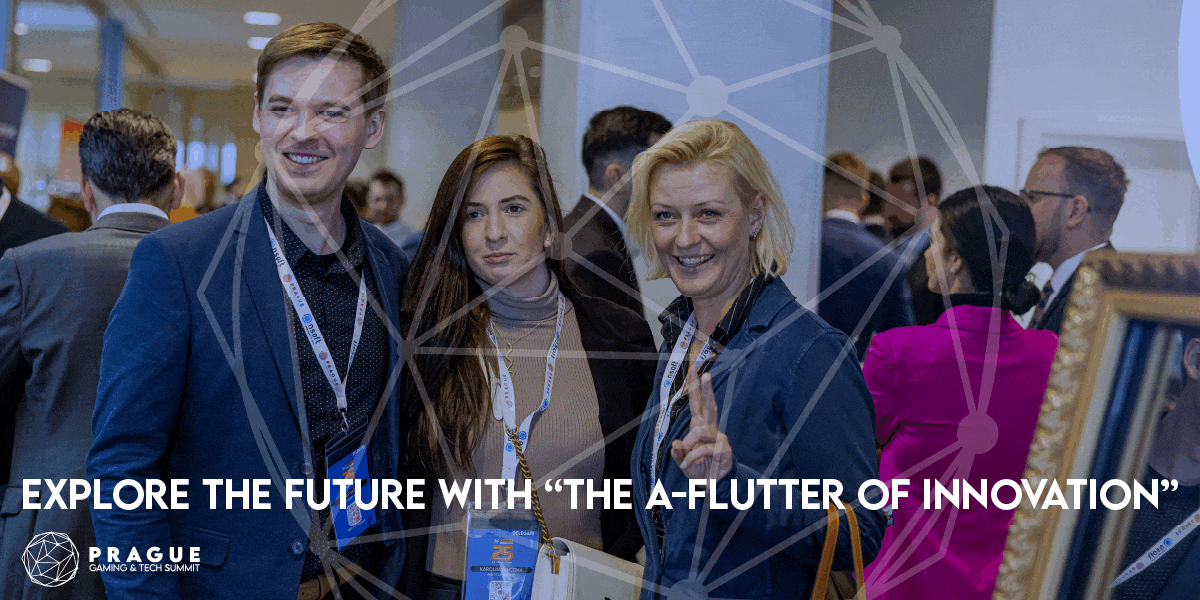Fintech
HAW Capital 2 Corp. Announces Proposed Qualifying Transaction
Calgary, Alberta–(Newsfile Corp. – December 7, 2021) – HAW Capital 2 Corp. (TSXV: HAW.P) (“HAW2” or the “Company“), a capital pool company as defined under Policy 2.4 – Capital Pool Companies of the TSX Venture Exchange (the “Exchange“) is pleased to announce details related to an executed letter of intent, dated December 2, 2021 (the “LOI“) with Songistry Inc. (“Songistry“), a private company incorporated under the laws of the Province of Alberta, with respect to a proposed combination of both companies (the “Proposed Transaction“). The Proposed Transaction is expected to be effected by way of a share exchange, a triangular merger or similar transaction pursuant to the terms of a definitive agreement to be entered into by HAW2 and Songistry (the “Definitive Agreement”). The Proposed Transaction is expected to constitute a reverse take-over of HAW2 upon completion, and upon HAW2 shareholder approval, the Company expects to be renamed “Songistry Inc.” (the “Resulting Issuer“). It is intended that the Proposed Transaction, when completed, will constitute the Company’s “Qualifying Transaction” in accordance with Policy 2.4 of the TSX Venture Exchange Corporate Finance Manual. The Proposed Transaction is subject to compliance with all necessary regulatory and other approvals and certain other terms and conditions, including those set out in the Definitive Agreement.
Songistry has developed MDIIO (pronounced mid-EE-Oh), a music asset/copyright management and licensing engine that leverages the latest in artificial intelligence (“AI“) for songwriters, artists, music publishers, record labels, music supervisors, filmmakers and film and TV production companies. Songistry believes that MDIIO is the only music service that combines the needs of creators and creatives in a completely re-imagined and AI supported work-flow.
In connection with the Proposed Transaction, it is anticipated that at least 33,151,282 HAW2 common shares will be issued to Songistry securityholders in exchange for their Songistry securities (the “Songistry Securities“); with an approximate deemed aggregate consideration of $22,000,000 (or $0.15/ HAW2 common share). In addition, the Company anticipates that immediately prior to the closing of the Qualifying Transaction, HAW2, subject to shareholder approval, will cause its share capital to be consolidated on the basis of 4.42:1 so that HAW2’s share capital immediately prior to the closing of the Qualifying Transaction shall consist of 3,167,421 HAW2 common shares.
It is estimated that following closing of the Proposed Transaction and the Concurrent Financing (as described below), HAW2 shareholders will hold approximately 7% of the Resulting Issuer’s common shares and former Songistry securityholders will hold approximately 93% of such common shares.
Closing of the Proposed Transaction is subject to the completion by Songistry of a concurrent equity financing of a minimum of $4,000,000 (the “Minimum Proceeds“) and a maximum of $5,500,000 prior to the closing of the Proposed Transaction at a price of $0.66 per Songistry share (the “Concurrent Financing“). The Concurrent Financing may be completed on a brokered or non-brokered basis or a combination thereof. As of the date of this press release, no broker has been engaged by Songistry in connection with the Concurrent Financing. Concurrent with the completion of the Proposed Transaction, it is expected that one of the directors and officers of HAW2 will be retained as a director of the Resulting Issuer, with the remainder of the directors and officers to be replaced by Songistry nominees.
A more comprehensive news release will be issued by the Company disclosing details of the Proposed Transaction in accordance with the policies of the Exchange, including financial information respecting Songistry, the names and backgrounds of all persons who will constitute principals or insiders of Songistry, and information respecting sponsorship. The Company anticipates such news release will be issued once the Definitive Agreement has been finalized and certain conditions have been met, including: i) approval of the Proposed Transaction by the board of directors of the Company and ii) satisfactory completion of due diligence. Shareholder approval is not expected to be required with respect to the Proposed Transaction under the rules of the Exchange. However, shareholder approval will be required to change the name of the Company and to complete the Share Consolidation. In the event a Definitive Agreement is not reached, the Company will notify its shareholders by way of a news release. Trading in the shares of the Company has been halted and is not expected to resume until the Proposed Transaction is completed or until the Exchange receives the requisite documentation to resume trading. If the Proposed Transaction is completed, the Company expects that the Resulting Issuer will be listed on the Exchange as a technology issuer.
Completion of the transaction is subject to a number of conditions, including but not limited to, Exchange acceptance and if applicable pursuant to Exchange Requirements, majority of the minority shareholder approval. Where applicable, the transaction cannot close until the required shareholder approval is obtained. There can be no assurance that the transaction will be completed as proposed or at all.
Investors are cautioned that, except as disclosed in the management information circular or filing statement to be prepared in connection with the transaction, any information released or received with respect to the transaction may not be accurate or complete and should not be relied upon. Trading in the securities of a capital pool company should be considered highly speculative.
The TSX Venture Exchange Inc. has in no way passed upon the merits of the proposed transaction and has neither approved nor disapproved the contents of this press release.
For further information, please contact:
Scott McGregor
Chief Executive Officer
[email protected]
403-669-6065
Neither the TSX Venture Exchange nor its regulation services provider (as that term is defined in the policies of the TSX Venture Exchange) accepts responsibility for the adequacy or accuracy of this release.
This news release contains “forward-looking information” within the meaning of applicable Canadian securities legislation. Forward-looking information includes, but is not limited to, the structure of the Proposed Transaction, approval of the Exchange of the Proposed Transaction, completion of the Proposed Transaction, the share consolidation, the timing and amount of the Concurrent Financing, the name change and regulatory and shareholder approvals. Generally, forward-looking information can be identified by the use of forward-looking terminology such as “plans”, “is expected”, “expects” or “does not expect”, “budget”, “scheduled”, “estimates”, “forecasts”, “intends”, “anticipates” or “does not anticipate”, “believes”, or variations of such words and phrases; or terms that state that certain actions, events, or results “may”, “could”, “would”, “might”, or “will be taken”, “could occur”, or “be achieved”. Forward-looking information is based on the opinions and estimates of management at the date the information is made, and is based on a number of assumptions and is subject to known and unknown risks, uncertainties and other factors, including but not limited to obtaining the necessary approvals of the Exchange and the shareholders of the Company, the Company’s ability to complete the Proposed Transaction, completion of the Concurrent Financing, and other risks and uncertainties. Although the Company has attempted to identify important factors that could cause actual results to differ materially from those contained in forward-looking information, there may be other factors that cause results not to be as anticipated, estimated, or intended. There can be no assurance that such information will prove to be accurate, as actual results and future events could differ materially from those anticipated in such information. Accordingly, readers should not place undue reliance on forward-looking information. The Company does not undertake to update any forward- looking information, except in accordance with applicable securities laws.
Not for distribution to U.S. newswire services or for release, publication, distribution or dissemination directly, or indirectly, in whole or in part, in the United States
To view the source version of this press release, please visit https://www.newsfilecorp.com/release/106990
Fintech
Fintech Pulse: Daily Industry Brief – A Dive into Today’s Emerging Trends and Innovations

The fintech landscape continues to redefine itself, driven by innovation, partnerships, and groundbreaking strategies. Today’s roundup focuses on the latest digital wallet offerings, evolving payment trends, strategic collaborations, and notable funding achievements. This editorial explores the broader implications of these developments, casting light on how they shape the future of fintech and beyond.
Beacon’s Digital Wallet for Immigrants: A Gateway to Financial Inclusion
Beacon Financial, a leading player in financial technology, recently launched a digital wallet tailored to meet the unique needs of immigrants moving to Canada. This offering bridges a critical gap, enabling seamless financial integration for newcomers navigating a foreign system.
By combining intuitive technology with user-centric features, Beacon aims to empower immigrants with tools for payments, savings, and remittances. This aligns with the growing demand for tailored financial products that resonate with specific demographics.
Op-Ed Insight:
Financial inclusion is more than just a buzzword; it’s a moral imperative in the fintech space. Products like Beacon’s digital wallet highlight the industry’s potential to create tangible change. As global migration trends increase, such offerings could inspire similar initiatives worldwide.
Source: Fintech Futures.
Juniper Research Highlights 2025’s Payment Trends
Juniper Research’s latest report unveils pivotal payment trends poised to dominate in 2025. Central themes include the adoption of instant payment networks, a surge in embedded finance solutions, and the rise of crypto-backed financial products.
The research underscores the rapid adoption of real-time payment systems, fueled by increasing consumer demand for speed and efficiency. Meanwhile, embedded finance promises to blur the lines between traditional banking and non-financial services, delivering personalized and context-specific solutions.
Op-Ed Insight:
As the lines between financial services and technology continue to blur, these trends emphasize the industry’s shift toward convenience and personalization. The growing role of crypto-based solutions reflects an evolving consumer mindset, where decentralization and digital-first experiences gain precedence.
Source: Juniper Research.
MeaWallet and Integrated Finance Partner to Revolutionize Digital Wallets
MeaWallet, a prominent fintech solutions provider, has partnered with Integrated Finance to advance digital wallet capabilities and secure card data access for fintech companies. This collaboration focuses on empowering fintechs to deliver better, safer digital payment experiences.
MeaWallet’s role as a technology enabler aligns seamlessly with Integrated Finance’s goal of simplifying complex financial infrastructures. Together, they aim to create scalable, robust platforms for secure payment solutions.
Op-Ed Insight:
Partnerships like this underscore the importance of collaboration in driving innovation. As security concerns grow in tandem with digital payment adoption, solutions addressing these challenges are essential for maintaining consumer trust. The fintech ecosystem thrives when synergy and innovation coalesce.
Source: MeaWallet News.
Nucleus Security Among Deloitte’s Fastest-Growing Companies
Nucleus Security has achieved a remarkable milestone, ranking 85th on Deloitte’s 2024 Technology Fast 500 list. This achievement is attributed to its robust cybersecurity solutions, which cater to the increasingly digital fintech environment.
With cyberattacks becoming more sophisticated, fintech companies are under immense pressure to safeguard their platforms. Nucleus Security’s growth reflects the rising demand for comprehensive, scalable security solutions that protect sensitive financial data.
Op-Ed Insight:
In a digital-first world, robust cybersecurity isn’t optional—it’s fundamental. The recognition of companies like Nucleus Security signals the growing importance of protecting fintech infrastructure as the industry scales globally.
Source: PR Newswire.
OpenYield Secures Funding to Transform the Bond Market
OpenYield has announced a successful funding round, aiming to revolutionize the bond market through innovative technology. The platform promises greater transparency, efficiency, and accessibility in fixed-income investments.
This funding underscores the growing appetite for digitizing traditionally opaque financial markets. By leveraging cutting-edge technology, OpenYield seeks to democratize bond investments, making them accessible to a broader audience.
Op-Ed Insight:
The bond market, long viewed as complex and inaccessible, is ripe for disruption. OpenYield’s efforts to modernize this space highlight fintech’s transformative potential to democratize finance and empower individual investors.
Source: PR Newswire.
Key Takeaways: Shaping the Future of Fintech
Today’s developments underscore several critical themes in the fintech landscape:
- Personalization and Inclusion: Products like Beacon’s wallet highlight the importance of understanding and addressing specific user needs.
- Collaborative Ecosystems: Partnerships, like that of MeaWallet and Integrated Finance, emphasize the power of collaboration in solving industry challenges.
- Emerging Technologies: Juniper Research’s predictions affirm the continued influence of blockchain, embedded finance, and instant payment networks.
- Security at the Core: The recognition of Nucleus Security underscores the essential role of cybersecurity in fintech.
- Market Transformation: OpenYield’s funding signifies the ongoing disruption of traditional financial markets, paving the way for broader accessibility.
The post Fintech Pulse: Daily Industry Brief – A Dive into Today’s Emerging Trends and Innovations appeared first on News, Events, Advertising Options.
Fintech
Fintech Pulse: Industry Updates, Innovations, and Strategic Moves

As fintech continues to reshape the global financial landscape, today’s briefing highlights pivotal developments, strategic expansions, and innovative launches across the industry. This op-ed explores the latest advancements with commentary on their potential impacts and challenges.
Finastra Data Breach: A Wake-Up Call for Fintech Security
Source: KrebsOnSecurity
The cybersecurity landscape is buzzing after Finastra, one of the largest financial technology providers globally, confirmed an investigation into a potential data breach. Reports suggest unauthorized access to its systems, raising concerns about data security across its client base, which includes thousands of banks and financial institutions worldwide.
Implications and Challenges
While the details of the breach remain sparse, this incident underscores a glaring vulnerability in the fintech sector—cybersecurity. As financial services increasingly rely on interconnected ecosystems, breaches like these threaten not only individual institutions but also the trust customers place in fintech platforms.
The key takeaway for the fintech industry is clear: proactive cybersecurity strategies must go beyond compliance. Real-time threat detection, robust encryption standards, and regular audits are no longer optional but essential for maintaining operational integrity.
Future Considerations
This breach could trigger a domino effect, prompting regulators to tighten security standards and requiring fintech companies to double down on investments in data protection. Startups and mid-tier players, often lacking extensive cybersecurity budgets, may face significant pressure to keep pace.
PayPal Resurrects Money Pooling Feature
Source: TechCrunch
In a bid to stay ahead of the competition, PayPal is reintroducing its Money Pooling feature, a popular tool that was discontinued in 2021. The feature allows users to pool funds collectively, catering to families, small businesses, and social groups.
Strategic Revival
This move reflects PayPal’s commitment to customer-centric innovation. By reinstating a feature beloved by its user base, the company seeks to reclaim market share lost to emerging competitors offering similar functionalities.
Broader Industry Impacts
Money pooling represents a broader trend in fintech—customized solutions that cater to niche needs. This reintroduction may inspire competitors like Venmo and CashApp to refine their collaborative payment offerings.
While this move strengthens PayPal’s ecosystem, its success will depend on seamless integration with existing services and robust fraud prevention mechanisms to avoid abuse of the feature.
Santander Expands Fintech Reach in Mexico
Source: Yahoo Finance
Santander is making waves in the Latin American fintech space with the launch of a dedicated fintech unit in Mexico. The initiative aims to capitalize on Mexico’s growing fintech adoption and digital payments market, valued at billions of dollars annually.
Strategic Significance
Santander’s expansion into Mexico highlights the region’s untapped potential. Latin America is a burgeoning market for fintech, driven by increasing smartphone penetration, a youthful demographic, and demand for accessible financial services.
Challenges on the Horizon
While Mexico offers immense opportunities, regulatory complexities and market competition from local players like Clip and Konfío pose significant challenges. Santander will need to blend its global expertise with local adaptability to succeed in this dynamic market.
2024 Global Fintech Awards: Spotlighting Excellence
Source: PRNewswire
Benzinga has announced the winners of the 2024 Global Fintech Awards, honoring companies and individuals driving innovation in financial technology. This year’s winners spanned categories like blockchain, artificial intelligence, and payment solutions.
Recognizing Industry Leaders
Awards like these highlight the collaborative spirit and entrepreneurial drive fueling fintech growth. Recognizing trailblazers not only motivates incumbents but also inspires startups to push the boundaries of innovation.
What It Means for the Ecosystem
The awards also bring attention to emerging technologies. Categories such as blockchain and AI signal the industry’s continued focus on leveraging cutting-edge tech for efficiency and scalability.
Commonwealth Central Credit Union Partners with Jack Henry
Source: FinTech Futures
Commonwealth Central Credit Union (CCCU) has announced a partnership with Jack Henry, a leading financial technology provider, for a comprehensive tech upgrade. The collaboration focuses on enhancing member experience through improved digital services.
Modernizing Member Experiences
Credit unions have often lagged behind major banks in adopting advanced digital solutions. By partnering with Jack Henry, CCCU aims to bridge this gap, offering members streamlined services such as mobile banking, automated lending, and personalized financial tools.
A Growing Trend
This partnership reflects a broader trend in the financial industry—credit unions and smaller banks embracing fintech to remain competitive. As customer expectations evolve, partnerships like this may become the norm rather than the exception.
Key Takeaways for the Fintech Industry
- Cybersecurity is Critical: The Finastra breach underscores the need for robust security measures.
- Innovation Drives Loyalty: PayPal’s revival of its Money Pooling feature highlights the importance of listening to customers.
- Regional Opportunities: Santander’s expansion into Mexico showcases the untapped potential of emerging markets.
- Recognition Matters: Awards like Benzinga’s provide valuable visibility for companies and individuals shaping the industry.
- Partnerships Foster Growth: Collaborations between credit unions and fintech companies signify a trend towards modernized financial solutions.
The post Fintech Pulse: Industry Updates, Innovations, and Strategic Moves appeared first on News, Events, Advertising Options.
Fintech
Fintech Pulse: Milestones, Partnerships, and Transformations in Fintech

The fintech sector continues its relentless drive toward innovation and market dominance. Today’s highlights include a record-breaking customer milestone for Revolut, groundbreaking fintech solutions for women in the EU, open entries for the PayTech Awards 2025, implications of political shifts on funding, and notable recognition at the US FinTech Awards.
Revolut Hits 50 Million Customers: A Global Fintech Giant’s Milestone
Source: Revolut
Revolut, the UK-based financial super app, has achieved a monumental feat: surpassing 50 million customers worldwide. This milestone underscores its position as a leader in the global fintech landscape, furthering its ambition to create the world’s first truly global bank.
Key to this success has been Revolut’s strategy of expanding its offerings, from banking to travel and crypto services, all within a seamless user experience. The company’s recent ventures into emerging markets such as Latin America and Asia demonstrate its intent to bridge financial services gaps while retaining competitive differentiation through technology.
This milestone is not just a triumph for Revolut but a signal of fintech’s capacity to redefine traditional banking. It reinforces the narrative that digital-first strategies, customer-centric innovation, and international scalability can challenge long-standing financial institutions.
PayTech Awards 2025: Celebrating Excellence in Innovation
Source: FinTech Futures
The PayTech Awards 2025 are officially open for entries, promising to spotlight the brightest minds and most innovative projects in the payment technology sector. These awards are a testament to the industry’s commitment to advancing secure, seamless, and scalable payment systems.
This year, the focus is on emerging technologies that redefine how businesses and consumers interact financially. Categories will recognize achievements across multiple domains, including sustainability in payments, AI-driven solutions, and partnerships that push boundaries.
As fintech companies prepare their entries, the awards provide a timely reminder of the sector’s ongoing evolution and the collaborative efforts required to achieve meaningful breakthroughs.
U.S. Politics and the Fintech Sector: A New Era of Funding?
Source: American Banker
The U.S. fintech sector might witness an infusion of optimism as speculation about a second Trump presidency gains momentum. The Trump-era policies of deregulation and venture capital encouragement are remembered as catalysts for unprecedented fintech growth during his first term.
While it remains uncertain how regulatory landscapes will shift, the possibility of a more relaxed approach toward fintech compliance could rejuvenate funding inflows. Investors and startups alike are watching closely, weighing the potential benefits against long-term risks tied to reduced oversight.
A politically charged backdrop often spells volatility, but for fintech, it may also spell opportunity. Preparing to adapt quickly will be crucial for startups and established players in the face of any regulatory pivot.
Klara AI and Unlimit: Addressing the €1.3 Trillion Female Economy
Source: FF News
Klara AI has teamed up with Unlimit to launch a fintech solution aimed at empowering women across the EU. This collaboration targets the €1.3 trillion female economy by addressing the unique financial needs of women entrepreneurs and consumers.
The solution promises to integrate AI-powered tools with streamlined financial management services, enabling users to access credit, manage investments, and scale businesses effectively. By tailoring services to the underserved female demographic, the partnership hopes to drive financial inclusion and support economic growth.
This initiative stands as a blueprint for fintechs exploring niche markets, proving that innovation tailored to specific segments can yield transformative results.
Autire: Accounting Tech of the Year at US FinTech Awards
Source: Business Wire
Autire, a rising star in financial technology, has been crowned ‘Accounting Tech of the Year’ at the US FinTech Awards 2024. The award recognizes Autire’s ability to blend cutting-edge AI with intuitive user interfaces, delivering unparalleled accounting solutions for businesses of all sizes.
Autire’s platform has gained traction for automating complex accounting tasks, ensuring compliance, and delivering actionable insights through real-time analytics. Its emphasis on reducing administrative burdens for SMEs has been particularly impactful, enabling entrepreneurs to focus on growth rather than bookkeeping.
The recognition not only cements Autire’s reputation but also highlights the role of AI-driven accounting solutions in reshaping business operations globally.
Final Thoughts: A Fintech Revolution in Full Swing
From customer milestones to policy-driven opportunities, the fintech ecosystem is in constant evolution. Revolut’s ascent to 50 million users signals growing consumer trust in digital platforms. The PayTech Awards continue to inspire innovation, while political shifts could redefine the regulatory landscape. Initiatives like Klara AI and Unlimit emphasize the power of targeted solutions, and companies like Autire show how niche technologies can achieve broad impact.
The next phase of fintech growth will likely hinge on inclusivity, adaptability, and innovation—pillars that today’s news stories exemplify.
The post Fintech Pulse: Milestones, Partnerships, and Transformations in Fintech appeared first on .
-

 Fintech3 days ago
Fintech3 days agoFintech Pulse: Industry Updates, Innovations, and Strategic Moves
-

 Fintech2 days ago
Fintech2 days agoFintech Pulse: Daily Industry Brief – A Dive into Today’s Emerging Trends and Innovations
-

 Fintech PR3 days ago
Fintech PR3 days agoROLLER Releases 2025 Attractions Industry Benchmark Report, Unveiling Key Trends and Revenue Strategies
-

 Fintech PR3 days ago
Fintech PR3 days agoTAILG Represents the Industry at COP29, Advancing South-South Cooperation with Low-Carbon Solutions
-

 Fintech5 days ago
Fintech5 days agoFintech Pulse: Navigating Expansion, Innovation, and Sustainability
-

 Fintech4 days ago
Fintech4 days agoFintech Pulse: Milestones, Partnerships, and Transformations in Fintech
-

 Fintech PR2 days ago
Fintech PR2 days agoCritical Metals Surge Opens Prime Opportunity for Mining Investors
-

 Fintech PR3 days ago
Fintech PR3 days agoThe CfC St. Moritz Announces New Speakers from BlackRock, Binance, Bpifrance, Temasek, PayPal, and More for Upcoming 2025 Conference












